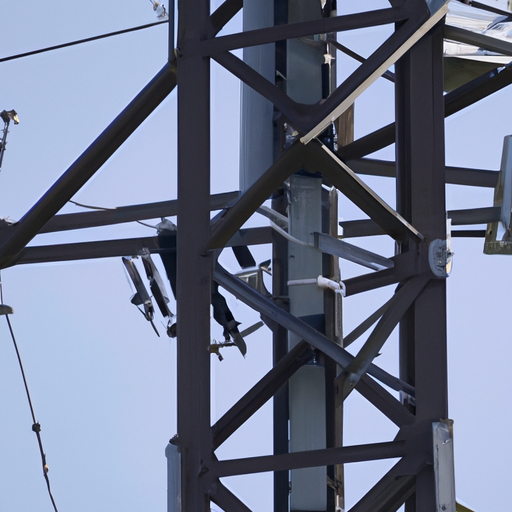Title: The Tower Connector Industry: A Comprehensive Overview

The tower connector industry plays a crucial role in various sectors, including telecommunications, power transmission, and construction. These connectors are essential components that enable the seamless connection and transmission of signals, data, and power between towers, ensuring efficient and reliable communication networks. In this article, we will delve into the current status of the tower connector industry, exploring its market trends, technological advancements, key players, and future prospects.
Market Overview:
The tower connector industry has witnessed significant growth in recent years, primarily driven by the increasing demand for reliable and high-speed communication networks. The proliferation of smartphones, the Internet of Things (IoT), and the need for seamless connectivity have fueled the expansion of this industry. According to a report by Market Research Future, the global tower connector market is projected to reach a value of $3.5 billion by 2023, growing at a CAGR of 6.5% during the forecast period.
Key Market Trends:
1. 5G Deployment: The advent of 5G technology has revolutionized the tower connector industry. With its promise of ultra-fast speeds, low latency, and massive connectivity, 5G requires advanced connectors capable of handling higher frequencies and data rates. Tower connectors that support millimeter-wave frequencies and offer low insertion loss are in high demand to ensure optimal 5G network performance.
2. Fiber Optic Connectors: As the demand for high-speed data transmission increases, fiber optic connectors have gained prominence in the tower connector industry. These connectors provide superior bandwidth and low signal loss, making them ideal for long-distance communication. The deployment of fiber optic connectors in tower infrastructure is expected to witness substantial growth in the coming years.
3. Miniaturization and High-Density Connectors: With the shrinking size of electronic devices and the need for compact tower infrastructure, miniaturized and high-density connectors have become essential. These connectors offer space-saving solutions while maintaining high performance. The industry is witnessing a surge in demand for small form factor connectors, such as micro coaxial and micro-D connectors, to cater to the evolving needs of tower connectivity.
Technological Advancements:
The tower connector industry has experienced significant technological advancements, enabling enhanced performance, durability, and efficiency. Some notable advancements include:
1. Self-Cleaning Connectors: Traditional tower connectors are susceptible to dust, debris, and environmental factors that can degrade their performance. Self-cleaning connectors, equipped with advanced mechanisms to remove contaminants, have emerged to address this issue. These connectors ensure reliable signal transmission, reducing maintenance costs and downtime.
2. Waterproof and Dustproof Connectors: With tower infrastructure often exposed to harsh environmental conditions, connectors with waterproof and dustproof capabilities have gained traction. These connectors are designed to withstand extreme weather conditions, ensuring uninterrupted connectivity even in challenging environments.
3. High-Speed Data Transmission: The demand for faster data transmission rates has led to the development of connectors capable of handling high-speed signals. Connectors with enhanced signal integrity, low crosstalk, and reduced insertion loss are being introduced to support the growing data requirements of modern communication networks.
Key Players:
The tower connector industry is highly competitive, with several key players dominating the market. Some prominent companies in this sector include:
1. Amphenol Corporation 2. TE Connectivity Ltd. 3. Molex LLC 4. Rosenberger 5. Huber+Suhner AG 6. Radiall 7. Hirose Electric Co., Ltd. 8. JAE Electronics, Inc. 9. Smiths Interconnect 10. Carlisle Interconnect Technologies
Future Prospects:
The tower connector industry is poised for significant growth in the coming years. The increasing demand for high-speed connectivity, the deployment of 5G networks, and the expansion of IoT applications will continue to drive the market. Additionally, the rising need for reliable power transmission and the growth of renewable energy sources will further fuel the demand for tower connectors.
Moreover, the industry is expected to witness advancements in materials, manufacturing processes, and connector designs, leading to improved performance, durability, and cost-effectiveness. The integration of advanced technologies like artificial intelligence and machine learning in tower connectivity solutions may also shape the future of this industry.
Conclusion:
The tower connector industry is experiencing robust growth, driven by the increasing demand for reliable and high-speed communication networks. Technological advancements, such as 5G deployment, fiber optic connectors, and miniaturization, are shaping the industry's landscape. Key players are continuously innovating to meet the evolving needs of tower connectivity. With promising future prospects, the tower connector industry is set to play a vital role in enabling seamless communication and power transmission in various sectors.